Southwest Michigan field crops update – July 22, 2021
Drier weather helps corn and soybeans grow in areas inundated by water. Wet conditions last week provided infection periods for corn tar spot and white mold. Begin scouting for tar spot and western bean cutworm egg masses in earnest.

Weather
The forecasted reference evapotranspiration (FRET) is around 1.3 inches in the coming week.
Precipitation totals for the past week are depicted below and ranged from less than 0.25 inches to over 2 inches with the second tier of counties receiving the most rainfall. The forecast for the coming week ranges from 1/10 in the eastern portion of lower Michigan to about an inch towards the Lake Michigan Coast. The 6-10 day outlook calls for near-normal rainfall improving to above normal precipitation in the 8-14 day outlook.
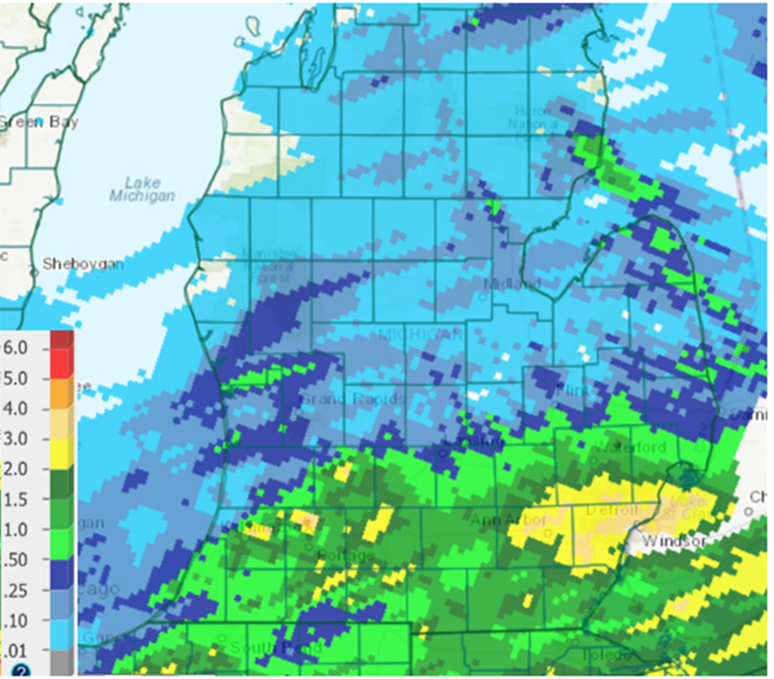
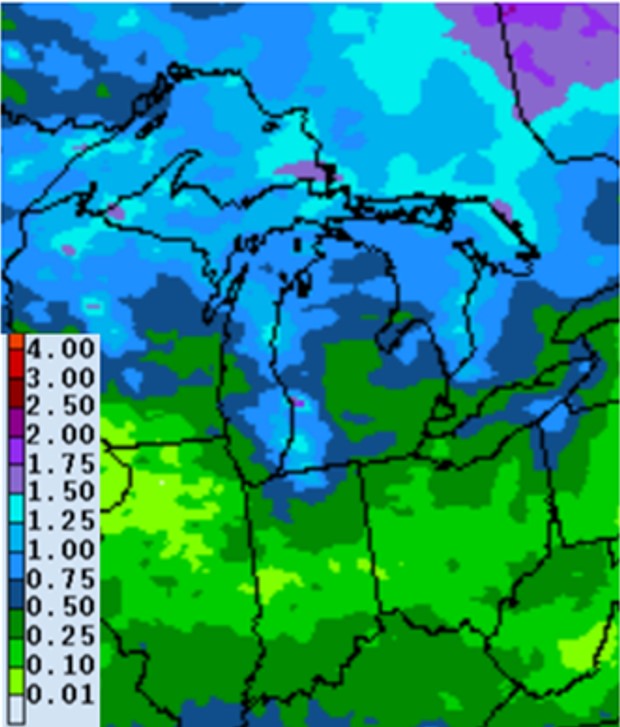
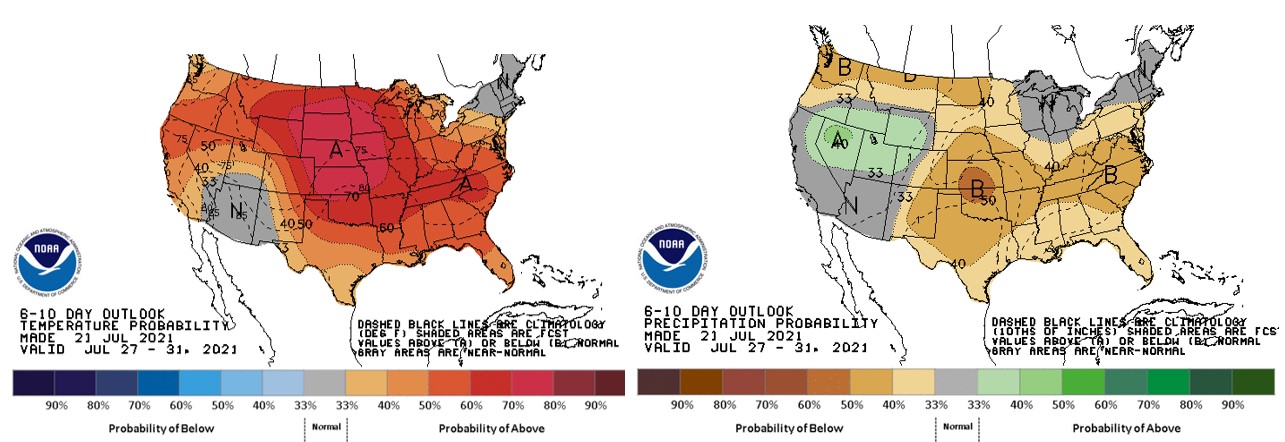
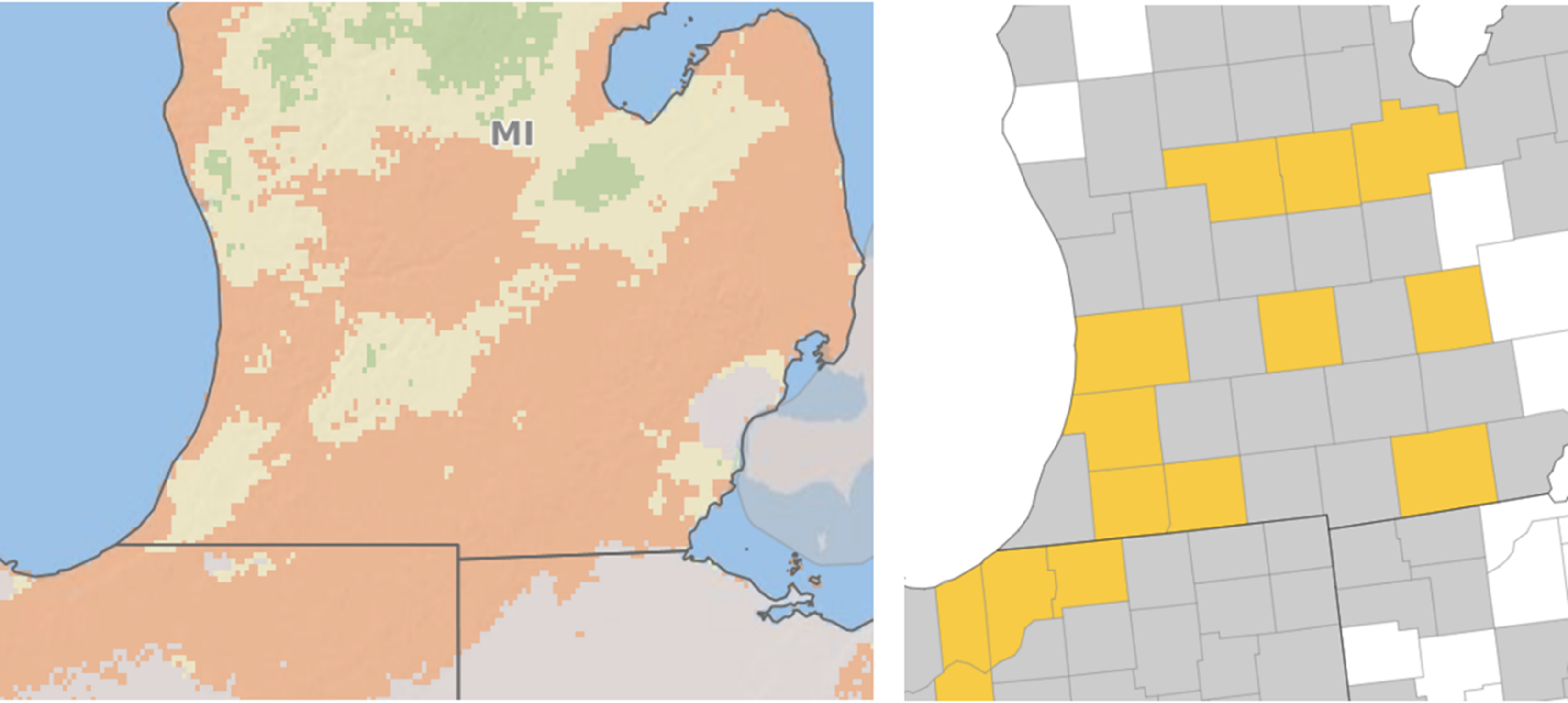
Crops and pests
Corn in many fields in the region has moved into, and in a few cases beyond, pollination (R1). The majority of soybeans have reached (R3) while a significant number of the later planted fields are moving towards this important growth stage. Since the outlook is for comparatively dry conditions, corn and advanced soybeans are nearing their peak water usage from V16 through beginning dent stage, and soybean’s peak water use from R3 (beginning pod) and goes through (R6). Both crops in these advanced stages will require roughly 1.6 inches of water this coming week.
Western bean cutworm moth flight increased significantly in the region and the greater Great Lakes region this past week. It is time to start looking for western bean cutworm egg masses in the upper corn leaf canopy. Be sure to wear eye protection if you are walking fields, and it is often easier to scout for egg masses during the mid-morning sun. Focus on pre- or early tasseling fields for egg masses. We had a 10-day count of 143 in a southern Van Buren County pheromone trap, so they continue to be actively flying.
Diseases
It is time to scout for tar spot in your southwestern Michigan corn fields.
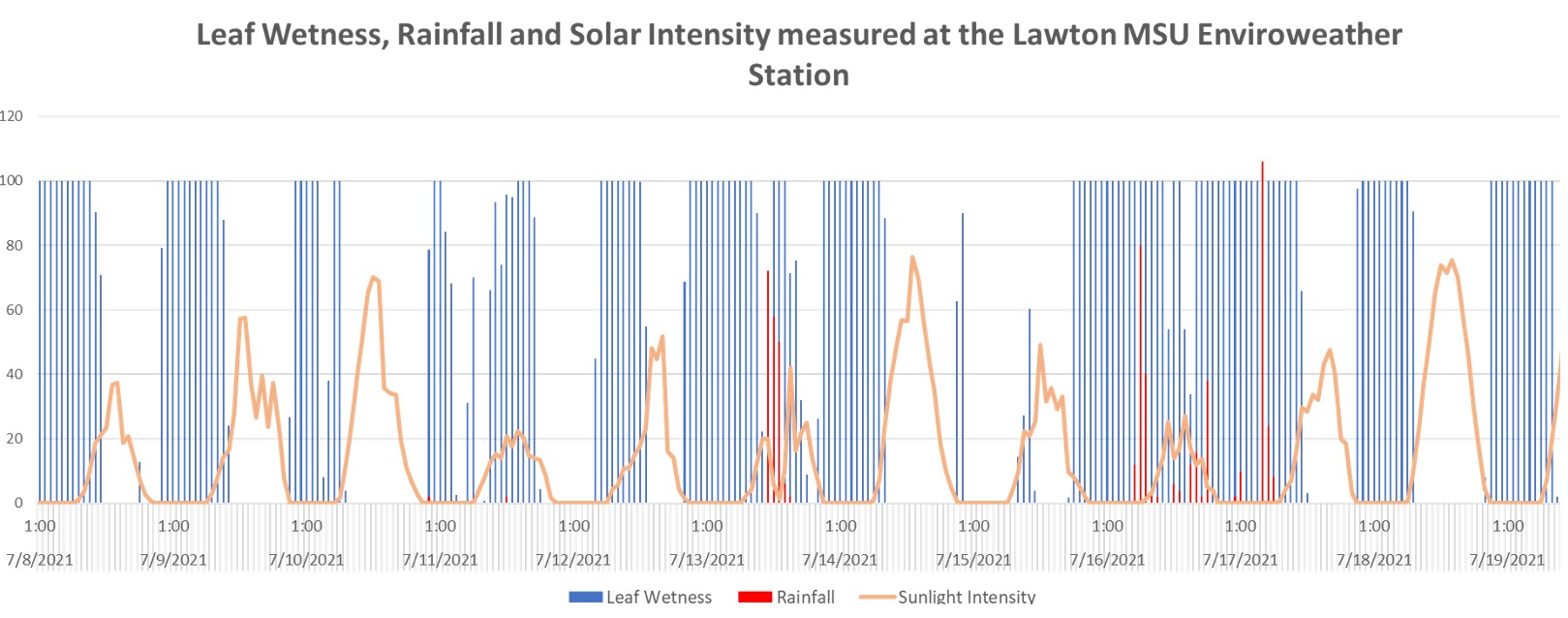
Given the wet weather southwest Michigan, tar spot of corn is beginning to be found in area corn fields. In fact, as of the writing of this article, at least some tar spot has been identified in 14 Michigan counties this July. Tar spot can develop quickly under favorable conditions, which includes periods of greater than 7 hours of leaf wetness. Irrigation applications can add to the duration of leaf wetness, so apply water at times that tend to minimize these extended periods of leaf wetness.
It takes about two weeks to go through a disease cycle, so the initial lesions would not begin to produce new spores for a little while yet. While drier conditions are in the forecast, we still encourage growers to begin scouting their fields for tar spot lesions on the leaves. It is not unusual to find tar spot in areas that are open to the wind flow, so field edges are sometimes the easiest and best locations to check for tar spot. This is especially true for rotated fields. Another “hot spot” to check may be areas that are shaded for extended periods.
Bug poop can also be mistaken for tar spot lesions, but true tar spot often can be seen on both sides of the leaf and will not rub off.
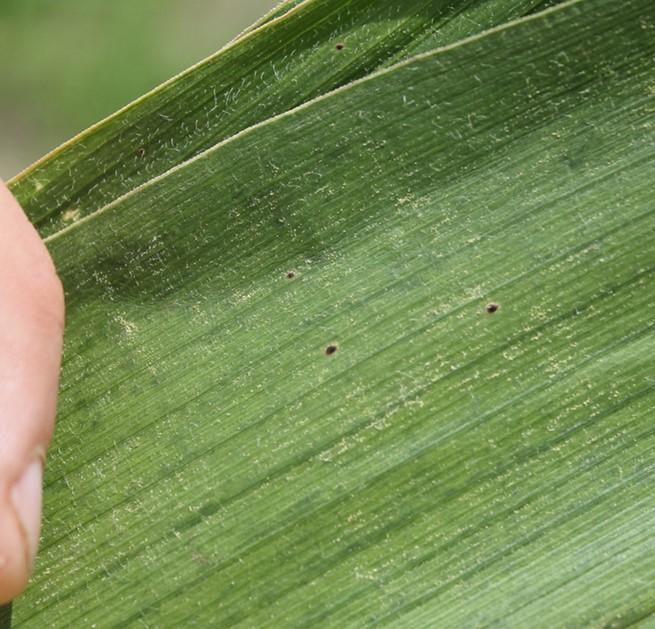
Because there are such large differences between corn hybrids’ ability to tolerate tar spot infections, it is difficult to pinpoint an exact scouting-based threshold for treatment. But the decision to apply fungicides should be made early enough to protect leaf tissues from excessive damage. The ideal fungicide timing for tar spot will depend on when the disease develops in a field. There have been situations (heavy disease pressure, susceptible hybrid and favorable weather conditions) where an application as late as early R4 has protected 20 bushels per acre.
There was an excellent discussion about corn tar spot control and white mold considerations during the Field Crops Virtual Breakfast this morning. Review the video of the July 22 Field Crops Team Virtual Breakfast to see research results from fungicide applications at Marty Chilvers’ tar spot research site in Decatur, Michigan, from the 2020 growing season for more information.
Corn fungicide recommendations can be found at the Crop Protection Network Corn Disease Management Bulletin CPN-2011-W. This publication is a joint effort of the Midwest Land Grant University Plant Pathologists.



 Print
Print Email
Email